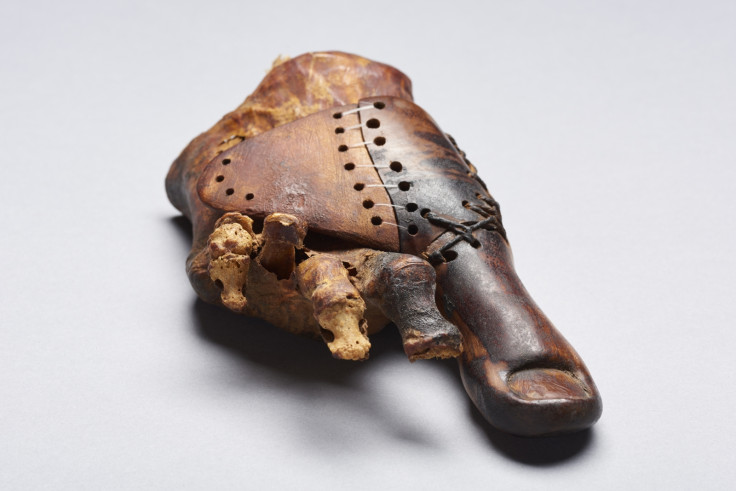Oldest prosthetic in the world is a 3,000-year-old wooden toe belonging to an Ancient Egyptian
A fake toe could tell you a lot about how someone lived.

Archaeologists are investigating a remarkable carved wooden toe dating back to the 1st millennium BCE. It is the oldest known prosthetic device discovered in the world so far.
The fake big toe is long, shapely and delicately carved with the detail of a toenail. The maker was highly skilled, as the toe was designed to be comfortable and mobile, attached around the ball of the foot with a strong strap.
The toe was discovered in a tomb in the necropolis Sheikh Abd el-Qurna, near the city of Luxor. The shaft leading to the tomb had already been plundered by the time archaeologists reached it. The burial place itself was constructed for a wealthy family close to the royals of the 15th century BCE, and had remained undisturbed for thousands of years.
"The fact that such a thing existed in such a sophisticated manner, integrating several materials and adapted to a very high functionality – that's an important discovery," Susanne Bickel, a researcher at the University of Basel told IBTimes UK. "We will go on with assessments of the scans we're taking. Hopefully more specific results will come out of this. That's the next step."
So far, the status of the prosthetic toe's owner was identified thanks to inscribed linen and papyrus found in the tomb – she was the daughter of a priest. It's not known how old the woman was when she died, but judging by the size of her remains she was an adult, said Bickel, who is a member of the Life Histories of Theban Tombs research group at Basel.
As to why she wore a prosthetic toe, the mystery still remains. Exactly how she lost her toe is impossible to determine at this point. But the purpose of the toe was probably more practical than for looks.
"I think it was as a question of balance to help her walking, which is more difficult without a big toe. There are marks showing use, so she did certainly walk about with it. It's harder to say whether aesthetics was also an aspect," Bickel said.
The group has been investigating the toe since 2015 using modern methods including X-rays, CT scans and microscopy. It's hoped that the analysis will reveal more of the woman's life history, her and her family's personal habits, preferences and skills.
© Copyright IBTimes 2025. All rights reserved.






















